Toyota Corolla Cross: 2022
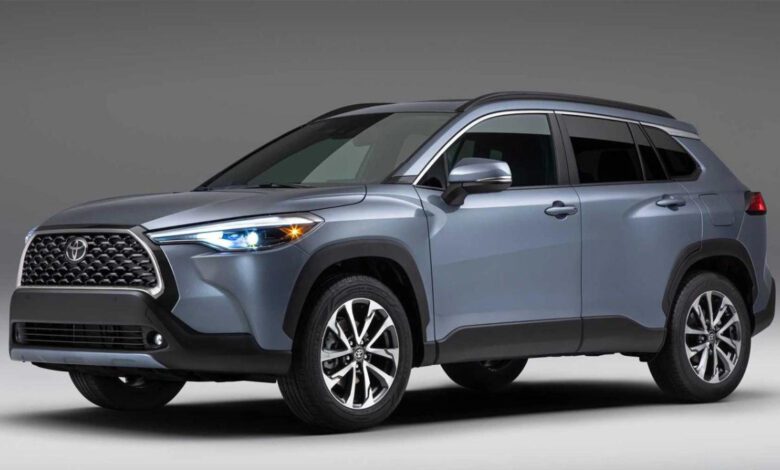
Toyota Corolla Cross: Everyone is familiar with the Toyota Corolla and what to anticipate from it: hassle-free, effective, and safe driving at a price that is easy on the pocketbook. Although other vehicles may be more attractive or quicker, the Corolla has a reputation that has stood the test for 55 years. This well-known moniker is extended to a new shape, a tiny crossover, with the 2022 Toyota Corolla Cross. The ‘Cross presents the famous Corolla value proposition: a wealth of safety features, decent fuel economy, and simplicity, but it also falls short in several crucial respects.
It seems logical that Toyota would apply part of the Corolla brand magic to a small crossover, given that this market is hotter than compact sedans. The Corolla Cross uses the essential components of the sedan while adding optional all-wheel drive (AWD) and a roomy crossover body, much like the RAV4 of the 1990s. The ‘Cross essentially mimics the interior design and feature set of the higher-trim Corolla sedans, sharing the same 169 horsepower 2.0-litre four-cylinder engine and continuously variable automatic gearbox (CVT), but it is also larger, heavier, and slower.
The Corolla Cross fits nicely between the more extensive, best-selling RAV4 and the Scion-like, front-drive-only C-HR. Its total length of 175.6 inches puts it nearly on par with the Volkswagen Taos and is around 5 inches shorter than the Toyota RAV4. However, its main rivals are C-HR-sized, including the Hyundai Kona, Mazda CX-30, Kia Seltos, and Chevrolet Trailblazer. Although the Corolla Cross may seem more significant from the outside, this isn’t always the case inside, and several of these less expensive competitors provide superior performance across a range of metrics.
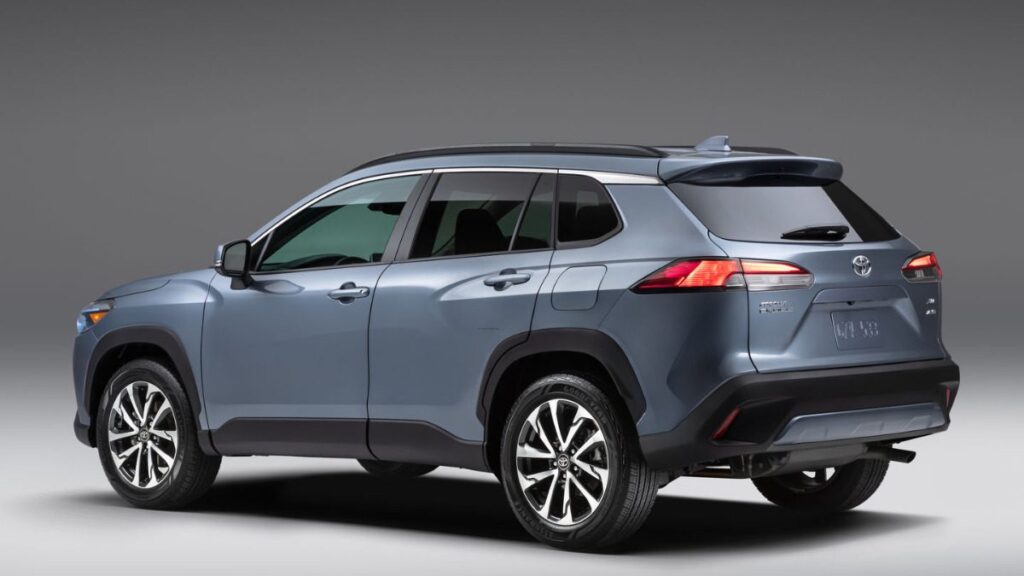
Although the Corolla Cross gets decent mileage for its class, it is clumsy and hard to drive. It may take about ten loud seconds to accelerate to 60 mph since there are 300 more pounds to move around than in a sedan. While other motorists won’t care, plenty will be speeding through every signal. Although the ride is smooth and the handling is relatively agile, there is a lot of roll due to the soft suspension. Additionally, the AWD system’s considerable ground clearance doesn’t translate into true off-road prowess.
The ‘Cross has the most cramped back seat in its class, apart from the even worse C-HR (31.7), with just 32 inches of rear legroom inside. Although the cargo amount is respectable, it is still smaller than in the Taos or Seltos. The cabin resembles the Corolla sedan’s, although it isn’t nearly as luxurious as the CX-30 or Seltos’. The ‘Cross is fortunate to get excellent ratings from the Insurance Institute for Highway Safety (IIHS) and has a more extensive selection of standard active safety features than most competitors.
Corolla devotees are fiercely devoted and like the sedan’s tried-and-true formula. Many people won’t mind the Corolla Cross’ flaws since it gives the same fundamental taste, and its tried-and-true mechanical components predict a comparable ownership experience. It excels at several things, and a hybrid version for 2023 (expected to be quieter and more potent) is being developed. Meanwhile, as usual, it pays to compare your options.
Performance: Toyota Corolla Cross
The Corolla Cross only has one available powertrain, a continuously variable automatic gearbox (CVT) paired with a 2.0-litre four-cylinder engine producing 169 horsepower and 150 pound-feet of torque. It is not a flavorful mixture. It takes over 10 seconds to accelerate to 60 mph, and the process is noisy. While some drivers don’t care about performance, others choose quicker, quieter, and more enjoyable vehicles, such as the 147-horsepower Kia Soul.
Although the ride is comfortable and the handling is passably agile, there is noticeably greater body roll than in the Hyundai Kona or Mazda CX-30, and winding roads can make the ‘Cross appear boat-like and more prominent. Although it does so at increased performance expense, it can pull up to 1,500 pounds.
The Corolla Cross is not much off-roader, even if it has 8.1 inches of ground clearance, optional AWD, and butch looks. Small slopes or dirt roads will be no issue, but there are no off-road settings or hill descent control, and even light moguls or deep snow may provide a challenge. The Subaru Crosstrek is considerably more competent if you require actual off-road ability at this budget.
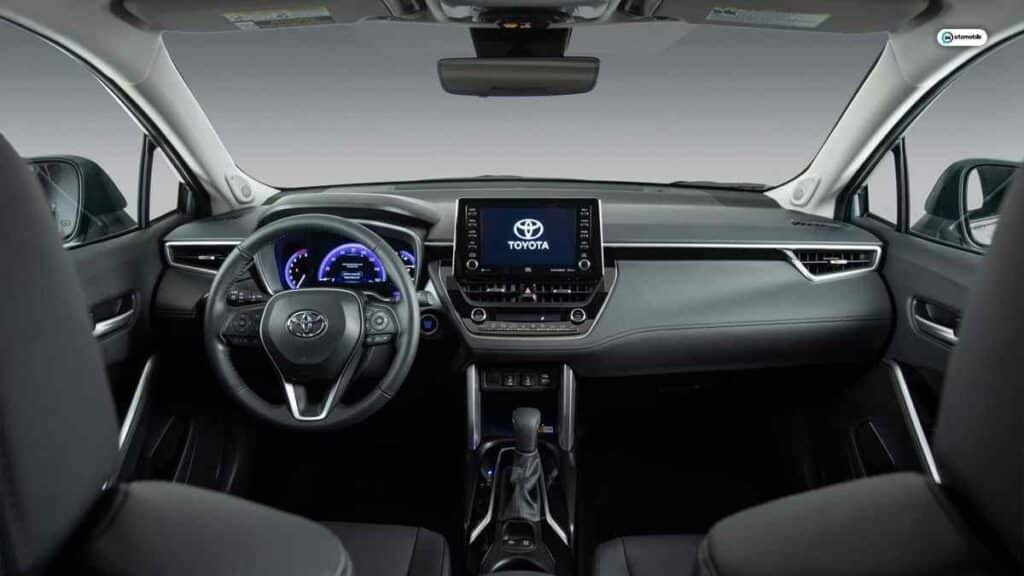
Fuel efficiency: Toyota Corolla Cross
The Corolla Cross tries to compensate for its lack of power with thriftiness and gets a good gas economy. It burns 87 octanes, earning EPA ratings of 31 mpg in the city, 33 mpg on the interstate, and 32 mpg overall in front-drive configuration. When AWD is added, the figures decrease to 29 cities, 32 highways, and 30 mpg, but in our test of an AWD XLE, we only saw roughly 27 mpg. However, compared to many other tiny crossovers, these figures are superior. The Kona, Nissan Rogue, and the Kicks from that manufacturer are the only ideal front-drive options on paper.
A hybrid Corolla Cross is scheduled to arrive in 2023. Still, in the meanwhile, certain other reasonably priced hybrid vehicles, such as the base Kia Niros, may be preferable options for those looking for the highest mpg in a compact crossover. The Corolla Cross hybrid is expected to represent a significant improvement in terms of power, mpg, and refinement.
Safety and driver support technology:
If there is one area where the Corolla Cross excels, it is safety. The crossover has a Top Safety Pick+ certification from the Insurance Institute for Highway Safety (IIHS) despite not being tested by the National Highway Traffic Safety Administration (NHTSA). That rating is also without restrictions. IIHS gives the basic model’s headlights just an “acceptable” grade, but otherwise, it receives high scores, and all trims are given the Safety Pick designation. Nine airbags are included, compared to other rivals’ six.
Many active safety measures are included in Toyota vehicles. The Toyota Safety Sense 2.0 system has adaptive cruise control, forward collision alerts, lane departure warning with lane keep assist, and front automated emergency braking with pedestrian and cyclist recognition. These systems all function pretty well. On LE versions, there is blind spot monitoring with rear cross-traffic alerts; XLE vehicles additionally have rear automated emergency braking.
After NHTSA completes its testing, we anticipate an increase in the Corolla Cross’ overall rating.
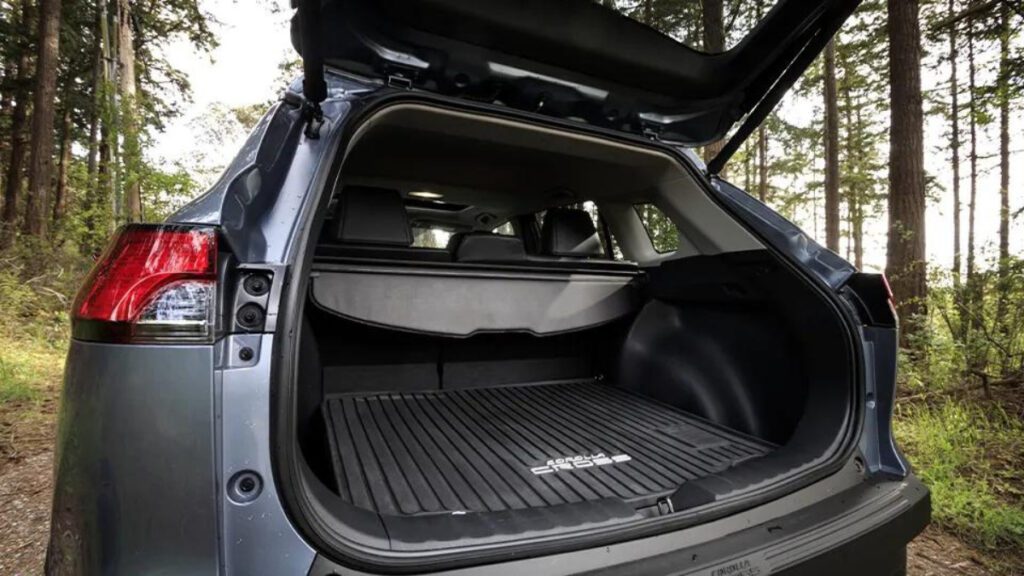
Comfort and Space
Front passengers have ample space, but the Corolla Cross’ rear seat is limited even when compared to physically smaller cars. With just 32 inches of rear legroom, it’s difficult for anybody except children to feel comfortable in the back. Head and hip space are sufficient, however. That measurement is 2.3 inches shorter than the Hyundai Venue, the smallest SUV available in the US, and almost 2 inches shorter than a RAV4 from the 1990s. With the Chevy boasting 39.4 inches of rear legroom, rival crossovers like the Seltos, Taos, and Trailblazer provide much more significant space in the back.
The Corolla Cross’ front and rear seats are somewhat firm yet supportive and not unpleasant, much like those of the Subaru Forester and Crosstrek. The reasonable wheelbase size and soft springs, to blame for all that body roll, result in a comfortable and supportive ride.
Infotainment: Toyota Corolla Cross
The Corolla Cross LE and XLE variants have 8-inch touchscreens and an optional 9-speaker JBL audio system, while the Corolla Cross L has a 7-inch touchscreen as standard. Drivers of Corolla sedans will be acquainted with the plans since they are identical to the ones employed in that vehicle. The UI is simple and archaic, but the displays are clear and bright. There is no navigation available.
The advantages include no learning curve and the retention of numerous tactile controls. If you don’t like the UI, Apple CarPlay and Android Auto are included. 4.2-inch digital displays are standard on L and LE versions, while 7.0-inch complete digital collections are available for XLE purchasers. Instead of using the center stack, the steering wheel controls are used to access the rules for the safety systems.
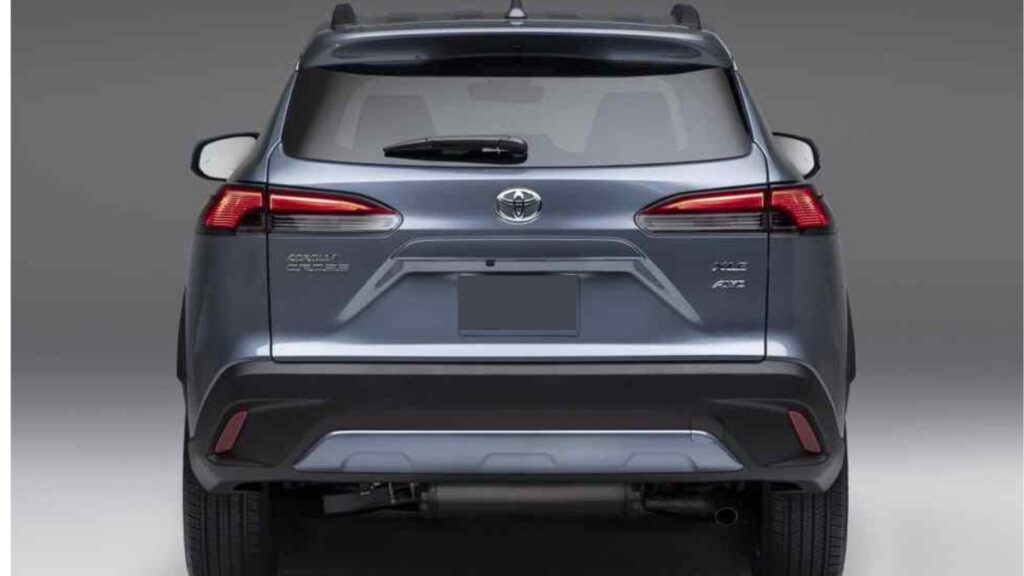
Storage & Cargo Space:
Only the space behind the back seats is officially measured in cubic feet by Toyota, with front-drive Corolla Cross models measuring 25.5 cubic feet and AWD models measuring 24.3 cubic feet. That outperforms a number of the Cross’ small-fry rivals, including the Kona, the CX-30, and the boxy Kia Soul, but it falls short of the Kia Seltos (26.6) and is only slightly higher than the Chevy Trailblazer (25.3). Surprisingly, the Toyota is the largest of these cars from the outside.
Overall, the cargo compartment seems smaller than those in the 65.9 cubic-foot cavern of the VW Taos, the Trailblazer (54.4), and the Seltos (62.8), with the seats folding, but it is comparable to the more petite guys.
Design: Toyota Corolla Cross
The Corolla Cross isn’t intended to be a high-style vehicle. Still, it has an excellent overall appearance thanks to its aggressive posture, massive fender flares, and narrow headlights and taillights. Interestingly, it is similar to Infiniti’s new QX60, although the design isn’t very distinctive. In this class, Hyundai and Mazda offer more exciting models.
Modern, yet plain and sad, the decor. The materials have a cheap, built-down appearance and feel. This vehicle is value-oriented, but so are the Honda Civic and Ford Maverick, which all have a more decadent interior.
The Toyota Corolla Cross 2022: Is It Worth It?
The Corolla Cross receives high marks for safety and fuel efficiency. Although Toyota’s reputation for dependability and affordable ownership is comforting, there are a lot of considerations in this situation. The cabin seems (low)-priced and is tight in the rear seat, with mediocre performance. Despite a stellar reputation, Toyota’s warranties are far shorter than those of Korean manufacturers.
But there are ways to enhance an already value-oriented car, and the Corolla name inspires much devotion. The L ($23,410 including a $1,215 destination charge), which is the base model, is followed by the LE ($25,760), which is the highest trim level, and the XLE ($27,540). On all models, AWD costs an additional $1,300.
We recommend avoiding the AWD option if possible since it doesn’t contribute anything and instead opting for the XLE. The extra features on this model, such as the 18-inch alloy wheels, the rear automated emergency braking, the dual-zone temperature control, the heated front seats, and the power driver’s seat, are well worth the extra cost.
A sunroof and a power liftgate are added for a convenience fee of $1,250, but the price jumps to $28,700. Not to mention the RAV4 XLE, which is dangerously near to the lovely places in the Taos and Kona lineups.
How Much Will Insurance for a 2022 Toyota Corolla Cross Cost?
Insurance for the Corolla Cross is more expensive than for the sedan or hatchback but around the same as for other crossover vehicles. Our findings show that a 30-year-old female driver with a clean driving record may anticipate an average yearly premium of $2,000 annually. In contrast, the Hyundai Kona costs $1,818; the Buick Encore GX $1,892; the Kia Soul $1,792; the Mazda CX-30 $1,707; and the Hyundai Elantra $1,988.
Verdict
Since 1967, devoted buyers have driven Corolla coupes, sedans, and wagons. They now have a whole new option with the 2022 Toyota Corolla Cross: a tiny crossover. The ‘Cross, which borrows mechanical components from the standard Corolla and installs them in a raised SUV with front- or all-wheel drive, is conceptually similar to the original RAV4 from the 1990s. Despite being fuel-efficient and with safety features, the Corolla Cross falls short of its main competitors in several other respects. The rear seat is small and loud, and it seems it was made on a budget.




